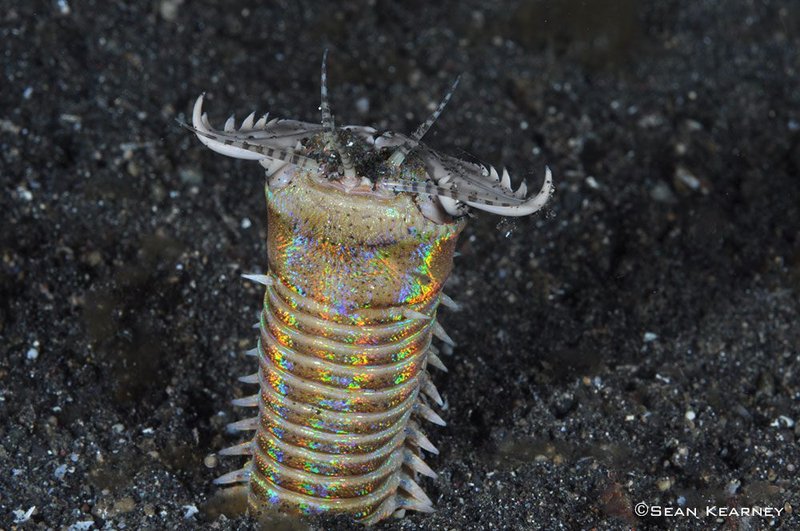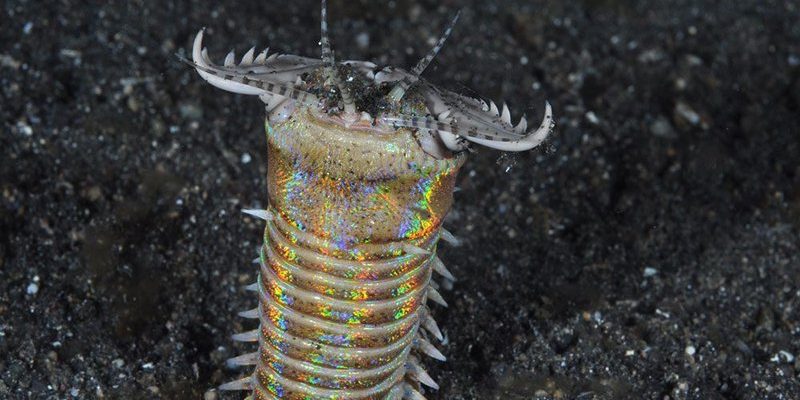
Now, you might be wondering how to observe these fascinating creatures without disturbing them. Here’s where red light comes into play. Unlike bright white lights, red light doesn’t scare off many marine animals, allowing you to sneak a peek at the Bobbit worms without alarming them. In this article, we’ll explore how to effectively use red light to observe Bobbit worms at night, including the type of lights you might want to use and tips for getting the best view.
Understanding Bobbit Worms
Bobbit worms, scientifically known as *Eunice aphroditois*, are intriguing marine creatures that call the sandy ocean floors home. They spend much of their time buried in the substrate, only revealing their heads and long, segmented bodies. This behavior helps them camouflage from potential predators and affords them the element of surprise when hunting. You might picture them as the stealthy ninjas of the ocean bed!
These worms can be quite formidable, using their sharp jaws to catch unsuspecting prey, such as fish or crustaceans. They can move quickly and can even regrow parts of their body if injured. This remarkable regeneration ability makes them a subject of interest in the scientific community. Observing Bobbit worms can be quite a spectacle, especially when they extend their bodies to capture prey.
Why Use Red Light?
When it comes to observing marine life, lighting plays a crucial role. Bobbit worms, like many other nocturnal creatures, can be spooked by bright lights. This is where red light shines—literally! You might be asking, “Why red light?” Well, the reason is simple: red light is less visible to many marine species, allowing for a more natural observation experience. It’s like wearing night vision goggles; you can see without alarming your subjects.
Using red light can enhance your observation experience in several ways:
- Minimizes disruption: Red light won’t scare Bobbit worms away, making it easier to watch them in their natural habitat.
- Better visibility: You can see details without washing out the underwater scenery.
- Extended viewing times: Since red light is less intrusive, you can linger longer without disturbing marine life.
The Right Equipment for Observing Bobbit Worms
To observe Bobbit worms effectively, you’ll need the right equipment. Most importantly, you should invest in a quality red light source. Here are a few options to consider:
1. LED Headlamps: These are great for hands-free use. Attach a headlamp to your forehead and keep your hands free for holding equipment.
2. Underwater Flashlights: Waterproof, red LED flashlights designed specifically for underwater use can illuminate deeper areas where Bobbit worms tend to hide.
3. Red Filters for Standard Lights: If you already have a flashlight, you can purchase a red filter that fits over the lens to change its color.
When choosing your equipment, think about the depth and specifics of your observation area. Different tools work better in varied environments—whether it’s a shallow tide pool or deeper waters.
Preparing for Your Night Adventure
Before heading out to observe Bobbit worms, it’s important to prepare properly. Here’s a checklist to help you get organized:
– Research Locations: Look for known habitats of Bobbit worms. They usually thrive in sandy, soft substrates in warmer waters.
– Gather Your Gear: Bring your red light source, a camera or smartphone for capturing images, and maybe even a notebook for jotting down observations.
– Consider Timing: Nighttime, especially during a new moon, is ideal for spotting these creatures. The darkness allows for better visibility of their movement.
It’s essential to respect the environment during your expedition. Avoid trampling over habitats or disturbing the creatures unnecessarily. After all, you’re there to observe, not disrupt!
Techniques for Observing Bobbit Worms
When you’re ready to observe Bobbit worms, some techniques can help you get the most out of your experience:
1. Stay Still: Once you’ve found a spot, limit your movements. Bobbit worms are sensitive to vibrations in the water, so being still can enhance your chances of spotting them.
2. Use the Red Light Sparingly: Instead of flooding the area with red light, use it intermittently to minimize disturbance. Think of it like a flashlight in a dark room—you don’t shine it directly in someone’s eyes.
3. Patience is Key: Bobbit worms don’t move as quickly as some fish, so be prepared to wait. You might find yourself fixated on a spot for several minutes before one reveals itself.
With a bit of patience and the right techniques, you’ll create an exciting viewing experience that allows you to marvel at these amazing creatures in their natural environment.
Common Challenges and How to Overcome Them
While observing Bobbit worms can be rewarding, you might encounter a few challenges along the way. Here are some common issues and tips for overcoming them:
– Visibility Issues: If water clarity is poor, Bobbit worms may be harder to spot. Try to find areas with clearer water, or visit during a different time when conditions might be better.
– Equipment Malfunctions: If your red light isn’t working correctly, have a backup light source handy. Batteries can fail, especially in humid environments.
– Distractions from Other Marine Life: Sometimes, other marine creatures can outshine the Bobbit worms for your attention. It could be schools of fish or even curious crabs. While watching them can be delightful, remember to refocus on your primary goal.
By preparing for these scenarios ahead of time, you’ll ensure a more enjoyable observing experience overall.
Bringing It All Together
Watching Bobbit worms at night can be a truly mesmerizing experience. With a red light source by your side, you’ll be able to observe these incredible creatures up close without disturbing their natural behavior. With the right equipment and techniques, combined with a little patience, you can unlock a whole new world beneath the waves.
So, the next time you’re on a beach at night, consider taking some red light gear with you. You might just find yourself captivated by the beauty and mystery of Bobbit worms—and who knows what other marine wonders await! Happy observing!

